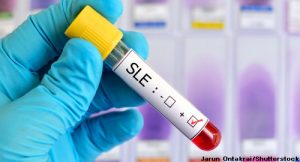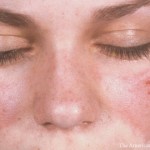 Although systemic lupus erythematosus (SLE) has an unpredictable disease course, rheumatologists recognize that persistent disease activity and flares may predict joint and organ damage and mortality.
Although systemic lupus erythematosus (SLE) has an unpredictable disease course, rheumatologists recognize that persistent disease activity and flares may predict joint and organ damage and mortality.
Ominosity
A 2021 study found a score of 20 or more on the 2019 EULAR/ACR SLE Classification Criteria can predict ominosity—or the likelihood of a more severe disease course—in patients with SLE. Senior investigator Sindhu R. Johnson, MD, PhD, associate professor in the Division of Rheumatology, University of Toronto, Canada, was co-chair of the 12-member 2019 EULAR/ACR SLE Classification Criteria steering committee.
In the study, Dr. Johnson and her colleagues sought to determine the possible link between the new EULAR/ACR SLE scores at diagnosis and subsequent disease severity. They found patients with a score of 20 or more had a more active disease course throughout the first five years than did those with a score less than 20 (P<0.001). Their findings were published in the Annals of the Rheumatic Diseases, and the researchers concluded the new criteria provide prognostic information about the severity of lupus in the first five years after diagnosis.3
New Tool for Patient Stratification
“There are no special tools or up-front methods to determine which population will have a worse disease course,” says first author Laura P. Whittall Garcia, MD, a clinical research fellow studying SLE at Toronto Western Hospital.
According to Dr. Garcia, although rheumatologists recognize that patients with lupus nephritis may have a worse disease course than those without nephritis, the new results are surprising because they apply to patients without lupus nephritis. All patients with an EULAR/ACR SLE score of 20 or more had a more ominous disease course than those with a score of less than 20. Dr. Johnson adds their findings indicate that these classification criteria both classify and prognosticate, suggesting they may be a new tool for patient stratification. She believes the criteria can help rheumatologists know which patients should be more closely followed in clinical practice.
The study involved an inception cohort of 875 patients, and the researchers followed 86.6% for at least one year, 76% for three years and 65.6% for five years. When the researchers applied the 2019 EULAR/ACR SLE Classification Criteria, they found, at diagnosis, 1.8% had a score of less than 10 and approximately half had a score of 20 or more. The scores had a normal distribution curve over a mean of 20.5. The three most common clinical domains of the EULAR/ACR SLE criteria documented in the study cohort were joint involvement, acute cutaneous lupus and non-scarring alopecia.


